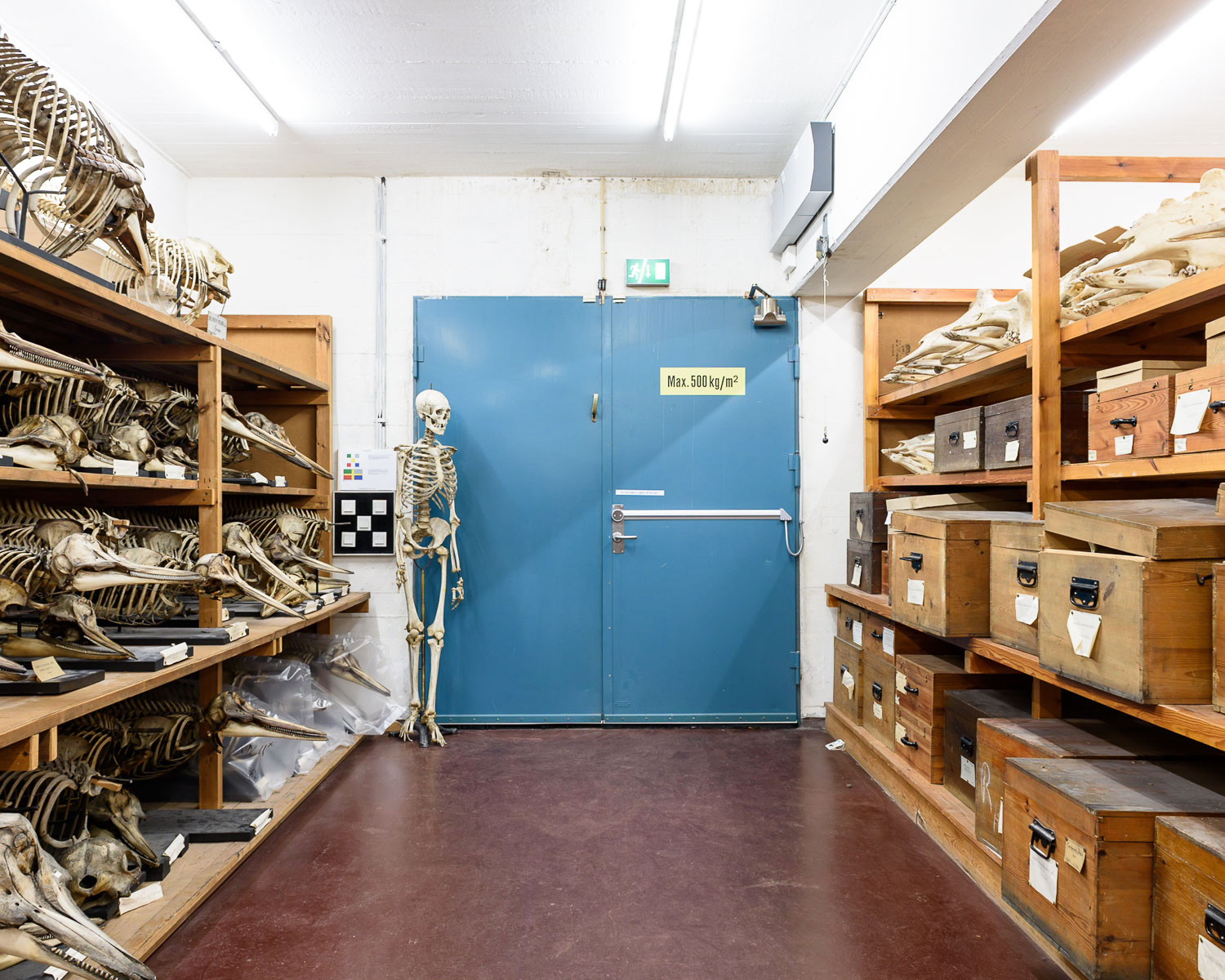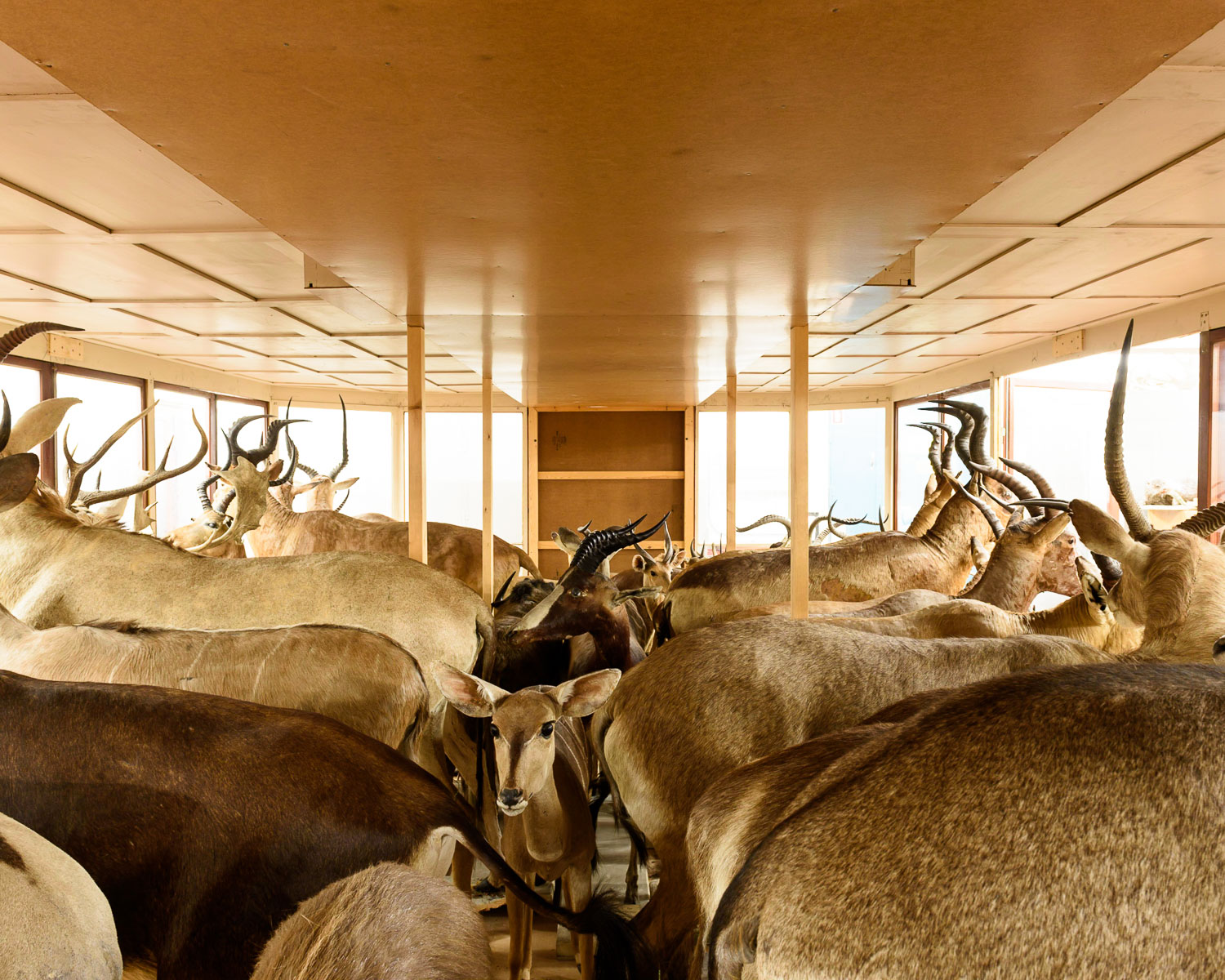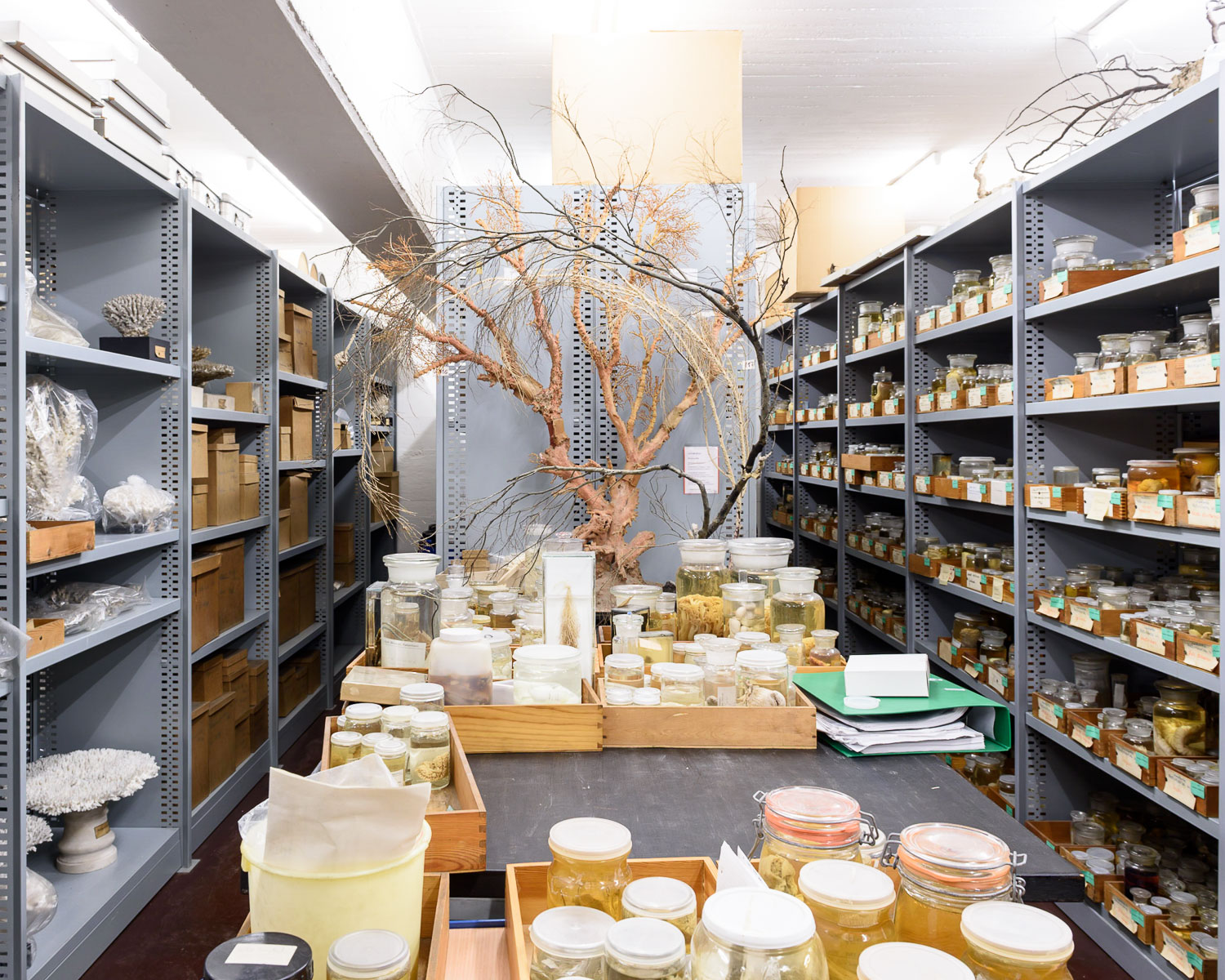The Zoological museum in Copenhagen is one of the oldest museums in Europe. You might not realise that when you look at the slightly run-down 70s building that houses it, in the same way that you might not realise that most of what makes up the museum itself is hidden from the public. Visitors to the museum might be forgiven for thinking that the most important part is the one with the exhibitions, the interactive learning blah blah and the cafe. But no! 80% of the building is taken up by floors full of millions upon millions of dead animals, dried, pickled, stuffed, crammed together, filed away, and actively used for research by the University of Copenhagen.
I think it is fair to say that I have never been surrounded by as many dead things in my life as when I photographed the archives. The mind boggles when trying to imagine how many animals there might be here - from a basement full of whale bones to a whole floor filled with tiny flies and fleas (a conservative estimate is 50-100 million). But the scientific value of all of these specimens is invaluable - the oldest specimens date back 350 years, allowing changes in populations, species and communities due to changes in environmental conditions to be observed. For instance, the collection of Polar Bear skulls from Greenland, the most complete of it's kind in the world, shows how climate change has affected the evolution of the bears over the last 150 years - Polar Bears are at the top of the food chain, so they are exposed to a lot of heavy metals.
The museum is relocating to a brand spanking new premises in 2021 where the specimens will be neatly packed away, so I jumped at the chance to get in and have a look before it moved.
This project was originally featured in N by Norwegian magazine, you can read the original text at the end of the post.
THE LOVELY BONES
Words by Sarah Warwick, as published in N by Norwegian March 2017
Many five year olds develop a fascination for superheroes. Others for dolls or bikes. For five-year- old Abdi Hedayat, however, it was dead animals. “It started when I was five when my mum took me to an office where there were a lot of stuffed animals, and I think I was just very struck by that.” By his teenage years he was visiting a taxidermy shop almost every day; at 14 he started to collect skulls. “It became like a calling for me,” he says.
With hindsight, it’s no wonder that Hedayat found himself working among the specimens of the Danish Zoological Museum as a conservator. Housing one of the largest such collections in the world, this 8,000 square metre facility is home to literally millions of animals: taxidermied beasts, bare bones, stripped skins and whole pickled creatures. You don’t have to like taxidermy to work here, but it probably helps.
“We have around 50-100 million animals,” says Hedayat, in an enthusiastic introduction. “The whole collection is made up of 14 million catalogued entries but each entry could be a single blue-whale skeleton or a jar with 200 grasshoppers. So it’s at least 14 million – and probably five times that.”
Only a fraction of these items ever go on show to the public, so the staff here are usually the privileged few who get to see these back rooms, with their lions and tigers and bears that peer from glass-fronted cabinets, and ancient insects pinned around in higgledy piggledy fashion. “People in Copenhagen know the exhibitions – they are our public face,” says Hedayat, “but they don’t know the collections, which are the heart of the museum.”
In a rare treat, photographer Alastair Philip Wiper was invited in to document these rooms and their eye-catching collections, which won’t be here for much longer. Strictly speaking, the zoology museum doesn’t exist; it was merged with the Geological Museum and Botanical Museum and Gardens to form the new Natural History Museum of Denmark back in 2004. And, although these collections are all still housed in their separate buildings, plans are in place for a physical merger too. By 2021 every one of the specimens from the various natural history museums will be shipped to a new purpose-built building.
When that happens, all these fantastic beasts will be stored away in compactors – grey shelving units like filing cabinets. It’s better for the collections, because it protects them from environmental weathering and dust, but it will be a shame for staff like Hedayat, who enjoy being surrounded by them. “We’re definitely going to miss it, because it won’t be anything like it is at the minute,” he says. “Right now, as you come in, you have skeletons all over the place. You have skins, you have stuffed animals. It looks like a movie set.”
You can certainly imagine this surreal arrangement of fluffy and scaly objects in a Hollywood prop room. There’s a strange sense of humour in the juxtaposition of a random ostrich with plastic jars of pickling liquid, say, or a lone wolf peeking around the edge of display cases. There’s a faint horror too. Jars full of baby lambs and cheetahs, even pandas, inspire an emotional reaction, despite labels showing that their deaths occurred tens or even hundreds of years ago.
One thing that strikes the visitor is the number of duplicate animals – an open trunk overflowing with armadillo corpses; a shelving unit stacked with two- foot long crocodiles, their half-open jaws hopeful even in death. This repetition, Hedayat says, is what makes the collections so valuable to researchers.
“If you want to do research today on animals, it’s not enough to have just a male, a female and two babies, you want to have huge series of animals collected over time. The Zoological Museum is one of the oldest museums in Europe. It was founded in the 1630s and our oldest specimen is from 1648, so we have many series like this. For example, we have about 900 polar bear skulls. The earliest ones are from the 1830s and the most recent are from
last year. They are used a great deal in heavy-metal pollution research because polar bears are top of the food chain,” he explains. “Polar bears today are exposed to a lot of pollutants, but in the 1830s they were as natural as they could get.”
Each specimen has to have data logged with it – location and date it was collected and sex at the very least – “otherwise it’s useless”. Those in the know can read these specimens to see what’s happening with a given species. “You can compare it to having a library, where instead of books there are skeletons and skins.”
In the new building ordinary people will have closer access to these volumes of natural history. There will also be a new permanent exhibition of some of the rarest treasures – many of which have never been shown to the public before, including a just discovered collection of molluscs donated by a youthful Darwin – “the largest Darwin collection
outside the UK” – and the skeleton of a greedy orca who was found post-mortem to have 27 sea mammals in its stomach. The latter even achieved literary fame, with a mention in Jules Verne’s Twenty Thousand Leagues Under the Sea.
Even better news, for those who share Hedayat’s fascination for zoological specimens, is the plan to try and recreate some of the backstage madness of this facility at the shiny new purpose-built complex – so everybody will get to experience a taste of this taxidermy wonderland. “Part of the new exhibitions will be a space that looks like this,” explains Hedayat. “We’re aware that this atmosphere in the collections is very special.”
http://nmagazine.ink-live.com/html5/reader/production/default.aspx?pubname=&edid=62ab88fd-2fa7-4a6b-958f-b2f6b4c296b4


















